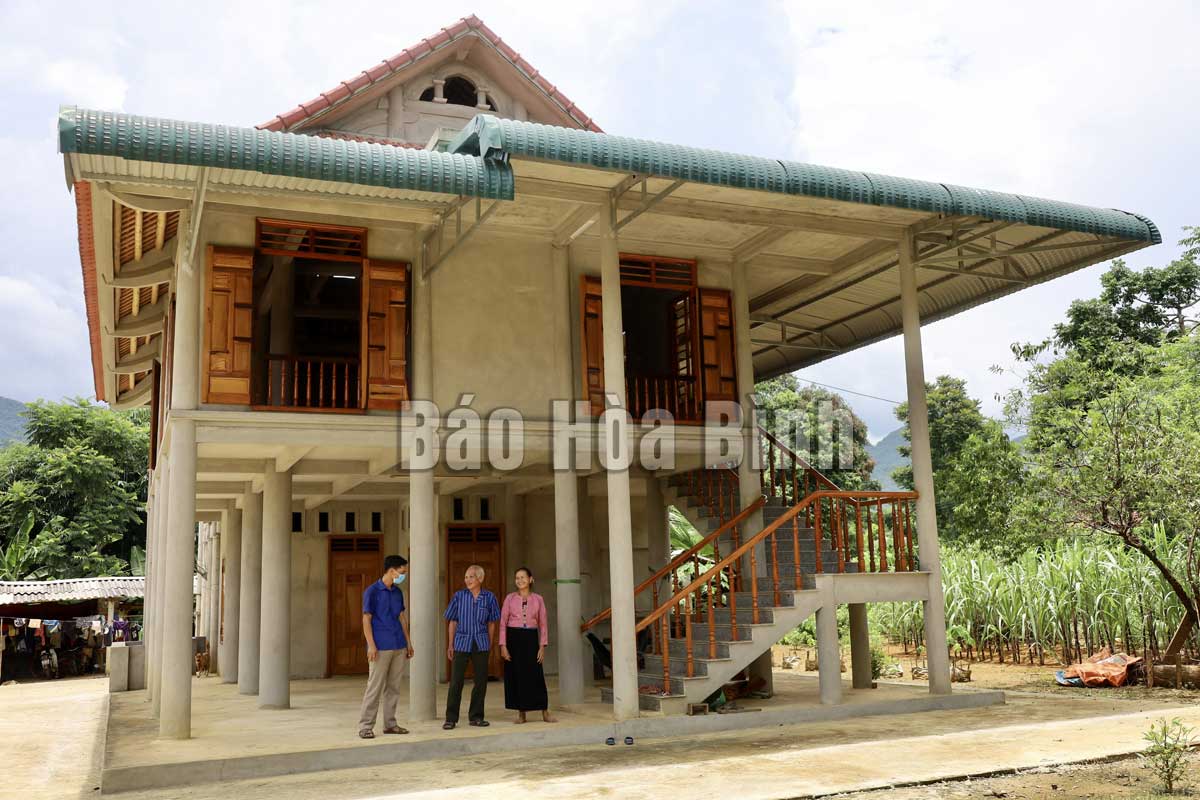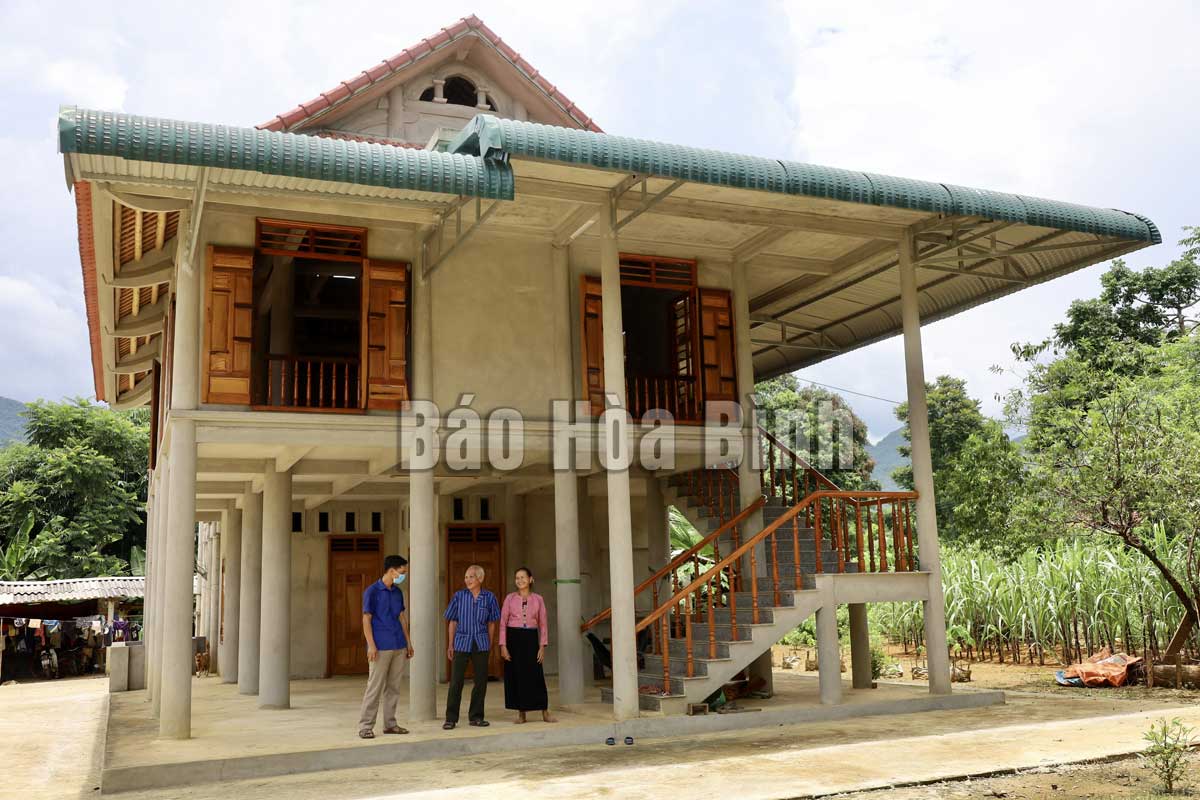



Mr. Quach Van Khiem’s family from Cau hamlet, Tan Ly commune (Lac Son) have used the new materials to build the stilt house, however, the traditional beauty has been maintained.
At the end of 2020, on the old foundation of the house, Mr. Quach Van Khiem's family from Cau hamlet completed the construction of a solid concrete stilt house, which has been the largest and th most spacious in the village. It cost nearly 1.1 billion VND to hire the laborers and buy the material. Mr. Khiem is proud to say: The stilt house is the biggest asset that my family has saved through our life, we have sold a herd of the fat buffaloes to build it. Despite the modern life, Muong ethnic have built flat-roof houses or high-rise houses in may places, however, the people in my village still keep the traditional stilt house with the traditional architecture of one room and two wings. In this house, the grandparents, the parents and the children gather every day. All of activities in the family still normally happens.
Cau hamlet is also one of the typical residential areas where most of the people maintain the custom of living in stilt houses. In addition to Mr. Quach Van Khiem's family, many other families have also built large and beautiful stilt houses, such as Mr. Quach Van Hien’s, Mr. Bui Van Dien’s, Mr. Quach Van Tan’ families... More than 80% of the 171 households in the village are living in the stilt house, the structure of which is made of concrete. The families have also focussed on creating a surrounding landscape for the stilt houses so that they are softer and they in harmony with the nature by the lines of areca catechu, the trusses of piper betie, the gardens of purple sugar cane or the verdant gardens of red pomelos.
In the commune’s area, there is a big and beautiful stilt house made of concrete of Mr. Bui Van Loi in Cai hamlet, which is the dream house of many people. In addition to the space factor, the house has met many utilities, creating a common living environment for the whole family with many spaces on the upper and lower floors. Mr. Loi says: The stilt houses made of original wood are easily prone to termites, and they need replacing and removing the damaged parts from time to time, which is both expensive and difficult to find. Together with the new trend, my family have chosen the stilt house made of concrete because of many advantages, durability and they still retain the cultural identity of Muong ethnic people.
According Mr. Bui Duc Toan, the Chairman of the Communal People's Committee, living in stilt houses is a custom that has existed since the ancient time. Previously, the stilt houses were made entirely of wood. However, facing the risk of "bleeding” the forest resources, the local authorities and committees have actively prevented acts of deforestation for timber in recent years. At the same time, they have encouraged the local people to collect other materials, avoiding using the natural wood sources. At this time, a resident from Nach hamlet came up with the idea to build the stilt house from concrete. The idea has been realized and replicated, creating new development for the local housing projects.
Promoting the campaigns and the movements of emulation, the People in the commune have actively preserved and promoted the traditional cultural values, especially the eating and living habits. With more than 90% of Muong ethnic minority households, over 70% of the total households in the commune still live in stilt houses, 30% of the households have built concrete stilt houses and have finished removing the temporary houses. In particular, with the creation of a cool space with many utilities, retaining the national identity, the stilt houses made of concrete have been not only chosen by many people in the commune but they have also spread in other Muong areas in Tan Lac, Yen Thuy and Hoa Binh city.